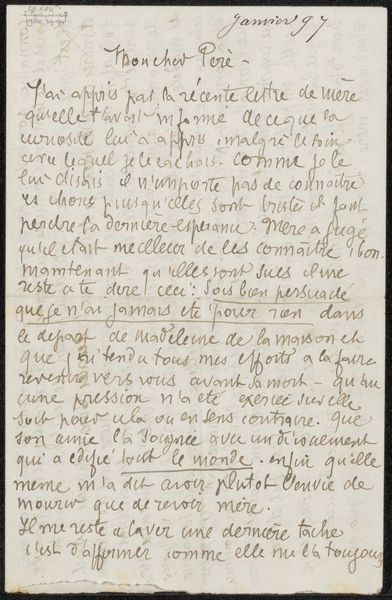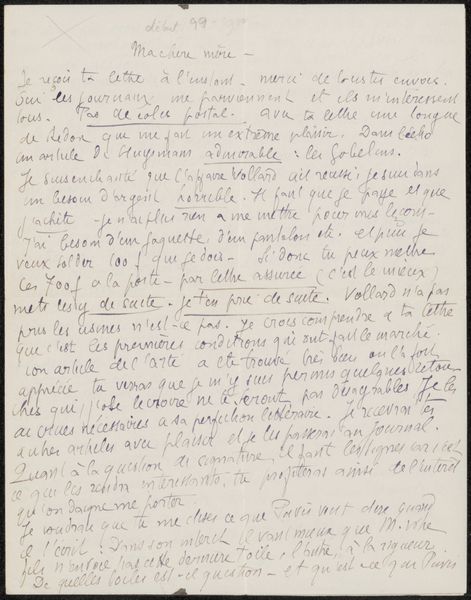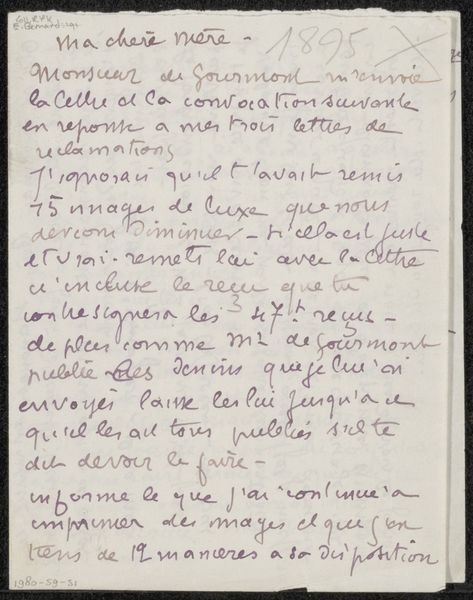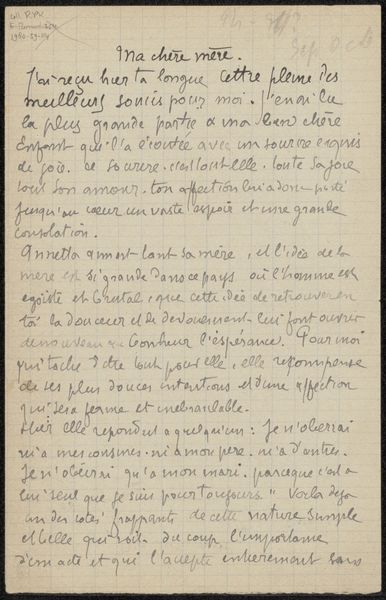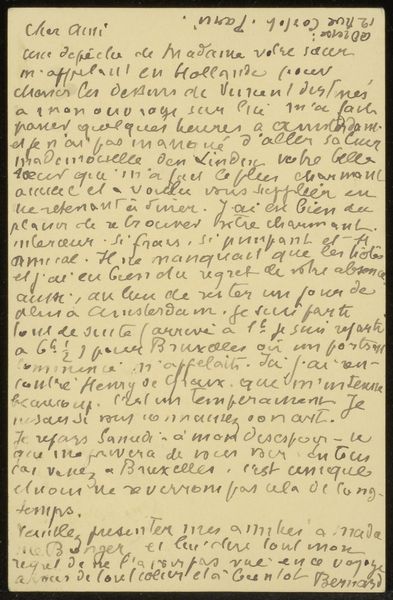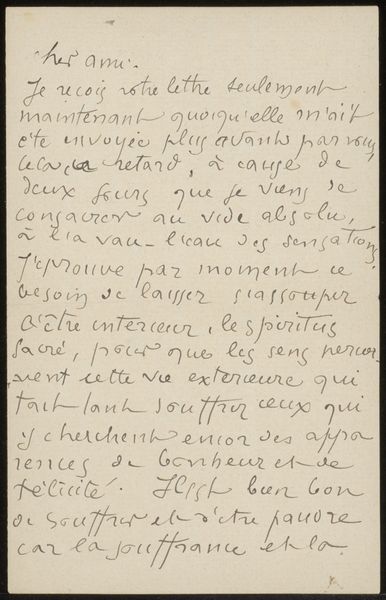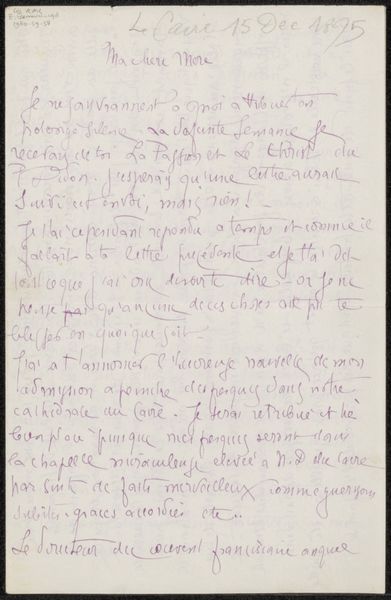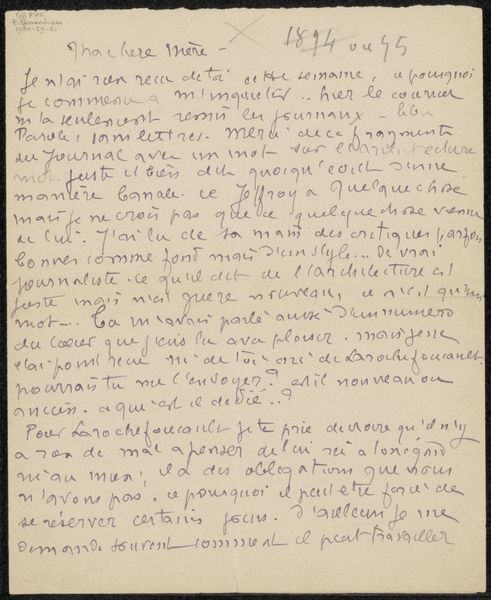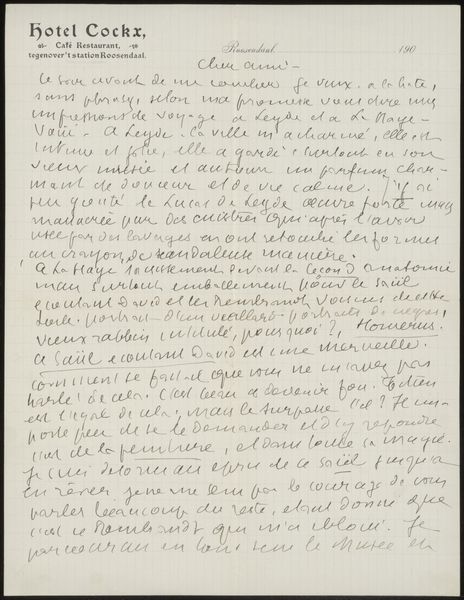
drawing, paper, ink
#
portrait
#
drawing
#
paper
#
ink
Copyright: Rijks Museum: Open Domain
This is a letter written in pen by the French artist Émile Bernard, probably in the 1890s, to Héloïse Bernard-Bodin. The letter is a commonplace in the history of art; as a personal document, it is a form of literature. But its status as a document worth preserving is defined by the fact that its author was a painter. How does this affect our reading of it? How does the letter create meaning through its cultural and historical associations with the life of an artist? Is it of interest because it contains information about Bernard's life and thought, or is it an artwork in itself? Does it critique the institutions of art? A historian might make use of the letter to understand more about Bernard, his family and friends, and the artistic world in which he moved. The meaning of art is always contingent on its social and institutional context, and that context requires extensive research to uncover.
Comments
No comments
Be the first to comment and join the conversation on the ultimate creative platform.


